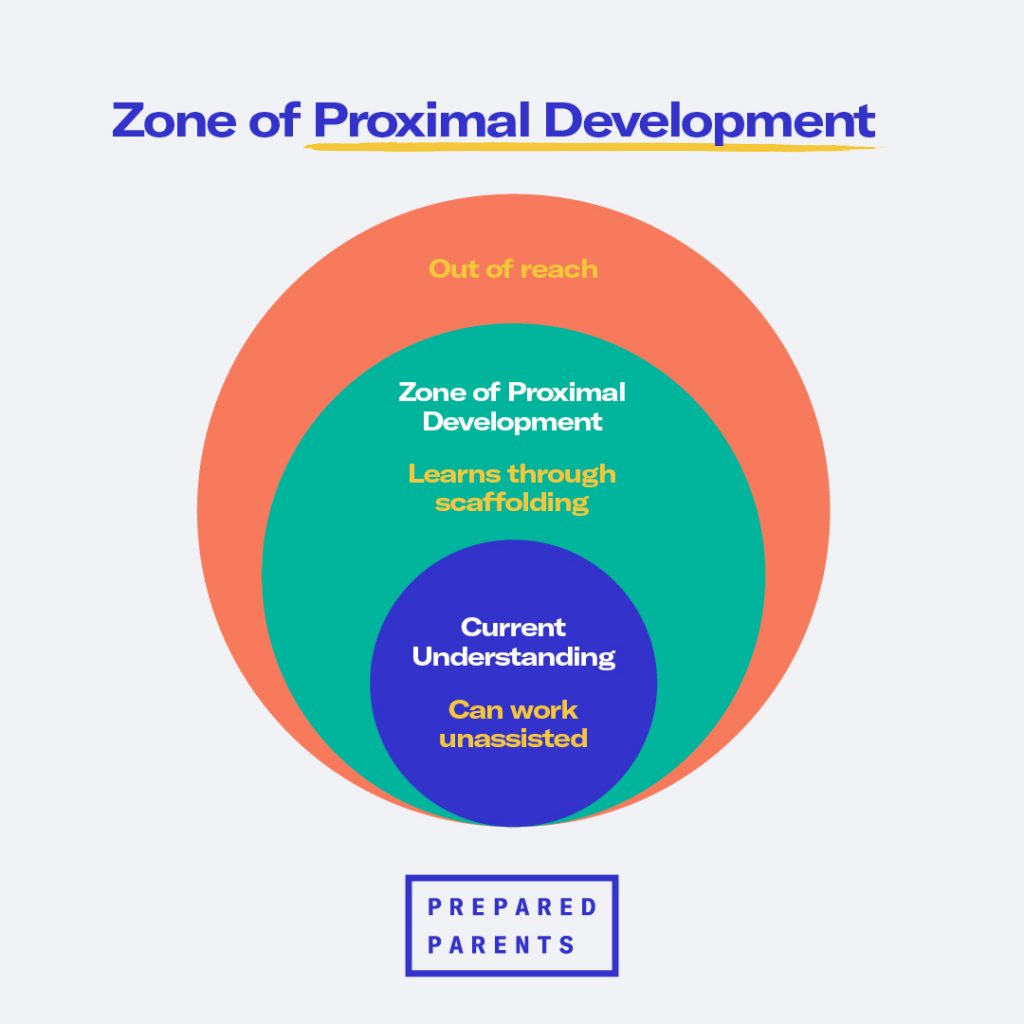There is a sweet spot of learning between what a kid already knows or can do and what they’re just not ready for—it’s called the Zone of Proximal Development (ZPD).

Psychologist Lev Vygotsky coined the term “zone of proximal development” or ZPD to describe that intellectual space between what a student can do alone and what they can do with specific assistance (scaffolding). Students benefit most from instruction targeted to their ZPD because it helps them learn new skills by building on previously established skills.
What this looks like in our kids is productive struggle, and it leads to better learning. But in Vygotzky’s concept of the ZPD, certain elements are essential to a kid’s flourishing:
- The presence of a more knowledgeable other—that might be you, the parent or coach, or it might sometimes be a sibling or more advanced peer.
- Social interaction with a skillful tutor (again, you or others) that lets the kid observe and practice through dialogue—watching, asking questions, and then internalizing new understanding. This social component is essential.
- Supportive activities to help kids with tasks or parts of tasks that are initially beyond the kid’s capability. As students’ skills and knowledge increase, the support provided by this scaffolding is reduced.

Every child is in their own zone, and can only learn what they are ready to learn. Helping a child acquire new skills and knowledge means understanding where the child is, and carefully supporting learning to meet that child within their zone.
The following strategies can help:
- Ask your kids questions to help them figure out the answer.
Provide the scaffolding that your young learner needs to get to the Zone, but resist the urge to micromanage them. Let them manage the tasks that are within their capability. - Engage in learning together.
Is your child learning about marine life? Watch documentaries together. Do you need to look up what a tsunami is? Google it together. Look for real-world learning moments that help your child connect what they’re learning to real life. - Don’t be afraid to back up.
Sometimes we’re missing the foundational knowledge that would make learning a new skill easy. Backing up to strengthen that foundational knowledge can make all the difference to acquiring new understanding. Don’t be afraid to review with your kid underlying concepts or ideas that are related to the new information. - Try the five power behaviors when they are stuck.
When kids struggle to pick up a new skill, they can misinterpret “this is hard” for “I can’t do this” and give up. The five power behaviors that power self-directed learners can help your kid find their groove, persist through a challenge, and keep going. - Suggest they ask older mentors or skilled peers for help.
Is your child struggling with some math problems? Try connecting them with an older peer who can improve their comprehension. - Use I Do, We Do, You Do.
Teachers often use an instructional model called gradual release of responsibility to help kids move toward independence using new skills. I Do, We Do, You Do is one variation of that model. First, you model the skill for the kid. Then you serve as a guide as you and the kid complete the skill together. Finally, the kid attempts the skill independently.
With practice and persistence, you will be on your way to helping your kid identify and get into their Zone, where the most magical learning happens.

